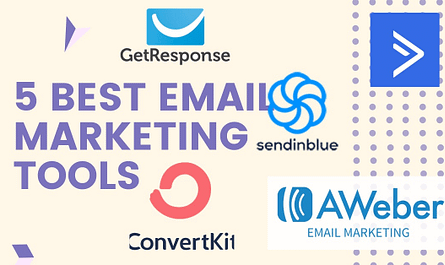In today’s digital age, the internet offers countless opportunities for individuals to turn their passions and expertise into profitable ventures. One of the most popular and accessible ways to do so is by creating a money-making blog or website. Whether you’re an aspiring entrepreneur, a hobbyist looking to monetize your interests, or a seasoned professional seeking additional income streams, building a successful blog or website can provide you with the platform to achieve your financial goals. In this comprehensive guide, we’ll walk you through the step-by-step process of creating a money-making blog or website, from finding your niche to monetization strategies and everything in between.
Page Contents
Understanding Your Audience and Choosing Your Niche
The foundation of any successful blog or website is a clear understanding of your target audience and the niche you will be catering to. Before you dive into creating content, take the time to research and identify a niche that aligns with your interests, expertise, and market demand. Here are some steps to help you narrow down your niche:
- Passion and Expertise: Start by making a list of topics you are passionate about and knowledgeable in. Consider your hobbies, professional skills, and personal interests.
- Market Research: Use online tools such as Google Trends, keyword research tools, and social media platforms to identify popular topics within your areas of interest. Look for niches with a sizable audience and room for growth.
- Competitor Analysis: Study other blogs or websites within your chosen niche to understand their content, audience demographics, and monetization strategies. Identify gaps or areas where you can provide unique value to your audience.
- Validation: Test your niche idea by creating sample content or conducting surveys to gauge interest and feedback from your target audience.
Setting Up Your Blog or Website
Once you’ve chosen your niche, it’s time to set up your blog or website. Here’s a step-by-step guide to get started:
- Choose a Domain Name: Select a domain name that reflects your brand and is easy to remember. Consider using keywords related to your niche for better search engine optimization (SEO).
- Select a Web Hosting Provider: Choose a reliable web hosting provider that offers features such as security, uptime, and scalability. Popular options include Bluehost, SiteGround, and HostGator.
- Install a Content Management System (CMS): WordPress is the most popular CMS for bloggers and website owners due to its user-friendly interface and extensive customization options. Install WordPress on your hosting account and choose a suitable theme for your website.
- Customize Your Website: Customize your website’s design, layout, and navigation to align with your branding and provide a seamless user experience. Add essential pages such as About Us, Contact, and Privacy Policy.
- Optimize for SEO: Optimize your website for search engines by incorporating relevant keywords, meta tags, and descriptive URLs. Install SEO plugins such as Yoast SEO to help you optimize your content for better visibility in search engine results.
Creating Compelling Content
Content is king in the world of blogging and website monetization. To attract and retain an audience, you need to create high-quality, engaging content that provides value to your readers. Here are some tips for creating compelling content:
- Identify Your Content Strategy: Develop a content strategy that outlines the types of content you will create, the frequency of your posts and the platforms you will use to distribute your content (e.g., blog posts, videos, podcasts, social media).
- Write Valuable Content: Focus on creating content that solves problems, answers questions, or entertains your audience. Provide actionable insights, tips, and advice that they can’t find elsewhere.
- Use Visuals: Incorporate visuals such as images, infographics, and videos to enhance the appeal of your content and break up text-heavy sections.
- Be Consistent: Consistency is key to building a loyal audience and maintaining momentum. Stick to a regular posting schedule and deliver content consistently to keep your audience engaged.
- Encourage Engagement: Foster a sense of community by encouraging comments, shares, and feedback from your audience. Respond to comments promptly and engage with your readers to build relationships and loyalty.
Monetization Strategies
Once you’ve established a solid foundation and built an audience for your blog or website, it’s time to explore monetization strategies to generate income. Here are some popular monetization methods:
- Display Advertising: Monetize your website through display advertising networks such as Google AdSense, Mediavine, or AdThrive. Display ads are placed on your website, and you earn revenue based on ad impressions or clicks.
- Affiliate Marketing: Partner with companies and brands within your niche and promote their products or services through affiliate links. You earn a commission for every sale or referral generated through your unique affiliate link.
- Sponsored Content: Collaborate with brands to create sponsored content such as product reviews, sponsored posts, or sponsored social media campaigns. Brands pay you to promote their products or services to your audience.
- Digital Products: Create and sell digital products such as e-books, online courses, templates, or printables related to your niche. Digital products offer high-profit margins and can be an excellent source of passive income.
- Membership Sites: Offer premium content, exclusive resources, or community access through a membership or subscription model. Charge a recurring fee for access to your premium content or services.
- Freelancing Services: Leverage your expertise and skills to offer freelance services such as consulting, coaching, writing, design, or virtual assistance to your audience or clients within your niche.
Driving Traffic and Growing Your Audience
To maximize the earning potential of your blog or website, you need to focus on driving traffic and growing your audience over time. Here are some strategies to increase your website’s visibility and attract more visitors:
- SEO Optimization: Continuously optimize your content for search engines to improve your website’s ranking and visibility in organic search results. Focus on targeting relevant keywords, creating high-quality content, and earning backlinks from reputable websites.
- Social Media Marketing: Promote your content across social media platforms such as Facebook, Twitter, Instagram, LinkedIn, and Pinterest to reach a wider audience and drive traffic back to your website. Engage with your followers and participate in relevant communities and groups.
- Email Marketing: Build an email list of subscribers interested in your niche and regularly communicate with them through email newsletters, updates, and promotions. Offer incentives such as lead magnets or exclusive content to encourage sign-ups.
- Guest Blogging: Write guest posts for other blogs or websites within your niche to reach new audiences and earn backlinks to your website. Guest blogging can help you establish authority, expand your reach, and drive referral traffic.
- Networking and Collaboration: Collaborate with other bloggers, influencers, and industry experts in your niche through interviews, collaborations, and joint projects. Networking can help you expand your reach, gain exposure, and tap into new audiences.
Analyzing and Optimizing Performance
As you build and grow your blog or website, it’s essential to track your performance and analyze key metrics to identify areas for improvement and optimization. Here are some metrics to monitor:
- Traffic and Engagement: Track website traffic, page views, bounce rate, time on site, and other engagement metrics to assess the effectiveness of your content and marketing efforts.
- Conversion Rates: Monitor conversion rates for different monetization channels such as ad clicks, affiliate sales, product purchases, or email sign-ups to evaluate the success of your monetization strategies.
- SEO Performance: Use tools like Google Analytics, Google Search Console, and SEO plugins to monitor your website’s SEO performance, keyword rankings, and organic search traffic.
- Audience Demographics: Gain insights into your audience demographics, interests, and behavior through analytics tools to tailor your content and marketing strategies to their preferences.
- Revenue and Profitability: Keep track of your revenue, expenses, and profitability to understand the financial health of your blog or website and make informed decisions about resource allocation and growth strategies.
Conclusion
Creating a money-making blog or website requires dedication, patience, and strategic planning. By choosing the right niche, producing valuable content, implementing effective monetization strategies, and consistently growing your audience, you can build a successful online platform that generates sustainable income and fulfills your entrepreneurial aspirations. Remember that success doesn’t happen overnight, but with persistence and perseverance, you can turn your passion into profit and achieve your financial goals in the digital age.
Discover more from MONEY CONSORT
Subscribe to get the latest posts sent to your email.




